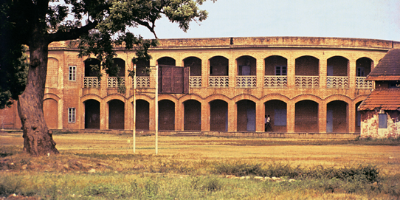East India Company and Missionaries (jan 1, 1698 – dec 1, 1813)
Description:
The East India Company (EIC) established in 1600 in England, came to India with primary interest in trading in the early 1600’s. In the early period of their presence, they showed no interest in education of the native Indians. By 1659, the Court of Directors of EIC stated their keen interest to spread Christianity among the people of India and allowed missionaries to accompany them to India. In 1698 charter from England, allowed the missionaries to engage in proselytising in India, primarily to servants in their factories (Nurullah and Naik, 1973). It laid the foundation for education of the European and Anglo-Indian children who lived in the possessions of the Company. No contribution to education of natives was made in the early years of East India Company in India.In the early 18th Century missionaries set up Charity and Asylum schools in Madras, Bombay and Calcutta based on the lines of British system. These schools were mainly meant for the poor Chidlren and orphans. The missionary chaplains also made an attempt to study the local language, laws and customs. They also came in contact with the Indigenous education system, which was largely dismissed. However, Dr. Andrew Bell carefully studied the monitorial system in Madras and adopted in his Asylum school in 1787. His approach was later tried in Britain for the mass expansion of primary education.
The East India Company became a major political power after the grant of Diwani rights in 1765. The company was called upon to encourage education among its subjects on the lines of the earlier Hindu and Muslim rulers. But these initiatives were restricted few centres of higher learning. The Company refused to recognise any obligation on its part for the education of vast majority of Indians. Quoting Nurullah and Naik “there was a conflict between the unwillingness of the Directors of the Company to accept responsibility for the education of the Indians, and the agitation of their officers in India, mainly on grounds of political exigency, to persuade them to accept it”.
Some of the British rulers, in personal endeavour and for political gain showed some interest in spreading education. Warren Hastings, Governor-General of Bengal showed keen interest in spreading oriental education in which effort Jonathan Duncan, Sir William Jones, joined hands.
The Christian Missionaries were the first to come forward towards the education of Indian masses. Nuruallh and Naik , pg X-XI, narrates a conflict between the desire of the missionaries to go to India to spread Christianity and the unwillingness of the Court of Directors to admit them to their territories. “It was only after a prolonged agitation that the Company was compelled, by the Charter Act of 1813, to accept responsibility for the education of Indians, to incur some expenditure for the fulfilment of this object, and to admit missionaries to its dominions for spreading Western ‘light and knowledge’. This was the beginning of the State system of education in India under the British rule”.
References
1. Naik, J. P., & Nurullah, S. (1974). Students' history of education in India 1800-1973. (6th Edition) MacMillan company of India limited. Introduction and Chapter II.
2. K L Narasimha Swamy Role of Christian Missionary Education in India during British Colonial period, http://tiss-toss.blogspot.in/ Sept 2014
Link for detailed Write up
http://www.importantindia.com/11643/development-of-education-system-in-india-during-british-period/
Added to timeline:
Date:
jan 1, 1698
dec 1, 1813
~ 115 years
